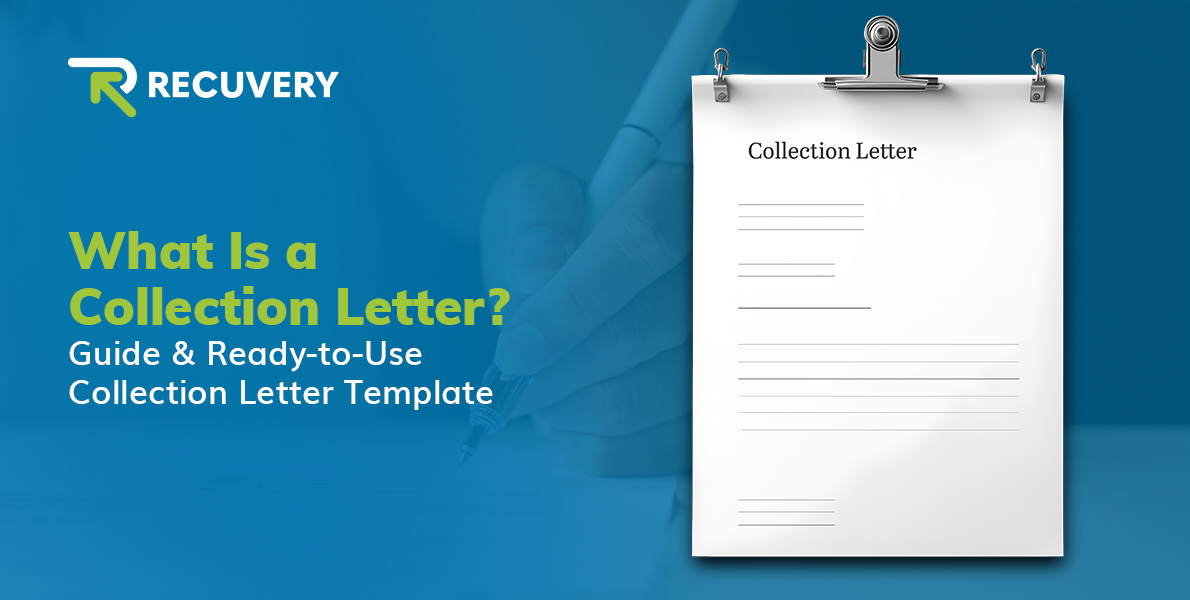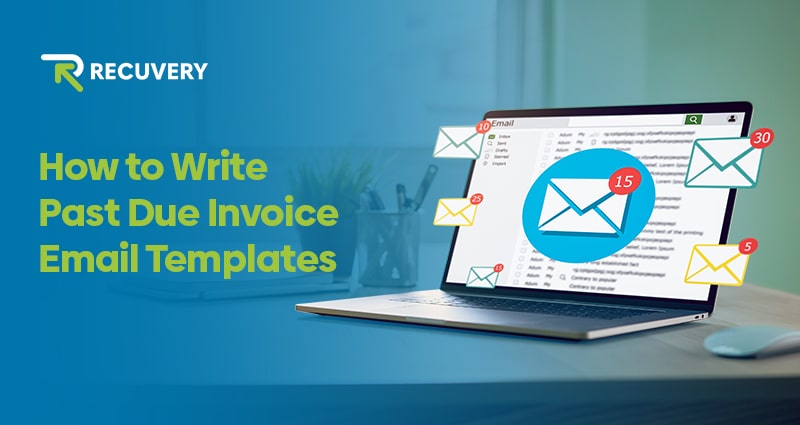What Is a Collection Letter? Guide & Ready-to-Use Collection Letter Templates

Meet Jordan, a small business owner juggling inventory, payroll, and endless to-dos. One client, months behind on payment, wasn’t responding to emails or calls. Instead of escalating things immediately, Jordan sent a carefully worded collection letter that was clear, professional, and firm. Within days, the client replied, apologized, and made the payment.
That’s the quiet strength of a well-timed collection letter. It turns uncertainty into resolution, without burning bridges.
What Is a Collection Letter and Why It Matters?
A collection letter is basically a formal communication, a written reminder from a creditor to a debtor saying, “Hey, you missed a payment. Can we sort this out?” A solid debt collection letter includes the amount owed, how to pay it, and what happens if payment isn’t made soon.
The Importance of Collection Letters in Debt Recovery
Indeed highlights that using professional collection letters supports steady income and cash flow management, enabling timely payments to staff and suppliers and ensuring smooth business operations. When invoices go unpaid, a well-crafted debt collection letter provides a professional yet firm approach to addressing the issue. It helps set clear expectations, communicates urgency, and preserves the relationship between creditor and debtor when handled appropriately. A structured collection letter format ensures consistency, legality, and effectiveness in debt communication.
By using a reliable collection letter template, businesses can:
- Prompt customers to pay overdue balances.
- Maintain professionalism in sensitive financial matters.
- Avoid escalation to legal proceedings or third-party collections.
- Document all communication efforts for compliance and accountability.
When to Send a Letter of Collection
Timing is crucial when it comes to debt recovery. Here’s a general guideline for when to send a letter of collection:
| Payment Status | Recommended Action |
| 7–14 Days Overdue | Send a polite payment reminder. |
| 15–30 Days Overdue | Issue the first collection letter with clear payment terms. |
| 31–60 Days Overdue | Send a more urgent collections letter, highlighting the consequences. |
| 61+ Days Overdue | Deliver a final debt collection letter, possibly indicating legal action or third-party involvement. |
Essential Elements of a Collection Letter Format
Here’s what makes a collection letter work:
► Your Business Info
Include your company name, address, contact info, and date right at the top. It sets the tone and confirms this isn’t spam, it’s real, and it’s coming from a credible source.
► Recipient Details
Next, include the customer’s full name and address. This helps personalize the message and confirms it reaches the intended recipient. Avoid generic greetings, as no one likes being called “To whom it may concern.”

► A Clear Reference
Mention the invoice number or order reference as this saves the customer the hassle of digging through old emails and lets them quickly connect the dots.
► The Outstanding Amount
State exactly how much is due. Use bold or underline for emphasis if needed, but avoid using all caps.
► Due Date & Payment Instructions
Tell them how and when to pay. Whether it’s a link to your payment portal, bank details, or a QR code, make the process as smooth as a one-click process.
► Friendly Reminder of Past Communication
If this isn’t the first notice, mention previous reminders or conversations. It shows consistency and helps you document the timeline.
► Consequences
Mention what happens if payment isn’t received – late fees, service interruptions, or possible escalation. Be clear but courteous. The goal isn’t to scare, it’s to motivate action.
► Offer to Help
Sometimes, customers want to pay but need flexibility. Let them know you’re open to discussing options like payment plans. This keeps the relationship alive and shows empathy.
► Professional Sign-Off
Wrap it up with a respectful closing, “Sincerely,” “Kind regards,” or “Best,” followed by your name, title, and contact details. It leaves the door open for conversation, not conflict.
Did you know?
According to QuickBooks, 73% of businesses experience negative impacts from late invoice payments, affecting cash flow and day-to-day operations.
Types of Collection Letters Based on Collection Stages
Collection letters should be tailored according to the stage of delinquency. Each stage requires a specific tone and structure to encourage resolution while maintaining professionalism and respect.
I. First Collection Letter Example – Friendly Reminder
Purpose: To remind the customer of the overdue payment in a courteous and non-confrontational manner.
At this initial stage (typically 7–14 days past the due date), the intent is to assume goodwill and offer a gentle prompt. The tone should be polite and professional, acknowledging that the delay may have been unintentional.
Example:
Dear [Customer Name], We hope this message finds you well. This is a friendly reminder that Invoice #[XXXX], dated [Invoice Date], with an amount due of $[Amount], appears to be outstanding. Please check the status of this invoice when you have a moment. If you’ve already paid, kindly ignore this message. If you have any questions, don’t hesitate to reach out to us. Sincerely, [Your Name / Company]
II. Second Collection Letter Sample – Follow-up With Urgency
Purpose: To prompt timely payment by communicating urgency and potential consequences of further delay.
Typically sent 15–30 days after the due date, this letter should strike a balance between professionalism and firmness. The customer should clearly understand the importance of resolving the matter promptly.
Example:
Dear [Customer Name], We are writing to follow up on the outstanding payment for Invoice #[XXXX], originally due on [Due Date], for the amount of $[Amount]. Despite our previous reminder, the balance remains unpaid. We kindly request that the payment be made within the next [X] days to avoid late fees or possible service disruption. If you are facing any challenges or need assistance, please do not hesitate to reach out. Kind regards, [Your Name / Company]
III. Final Collection Letter Template – Stronger Language Before Legal Action
Purpose: To provide a final notice before considering legal proceedings or third-party collection measures.
This letter is typically sent after the payment is more than 60 days overdue. It should be firm, formal, and clearly state the next steps if payment is not received. While the tone remains respectful, it should also convey the seriousness of the situation.
Example:
Dear [Customer Name], Even after several reminders, the payment for Invoice #[XXXX], totaling $[Amount], is still outstanding. This letter serves as a final notice. Unless payment is received within [X] days, we will be compelled to initiate further recovery actions, which may include legal proceedings or the involvement of a debt collection agency. We still hope to resolve this matter amicably and urge you to contact us promptly to avoid escalation. Sincerely, [Your Name / Company]
Ready-to-Use Collection Letter Templates
Managing overdue payments doesn’t have to be stressful or time-consuming. These ready-to-use collection letter templates are designed to help you communicate professionally and effectively, whether you’re a solo freelancer, small business owner, or part of an agency. Each template can be customised for your specific situation.
1. Simple Debt Collection Letter Template
Ideal for first-time reminders and friendly follow-ups.
[Your Company Letterhead / Logo] [Your Business Name] [Your Address] [City, Postcode] [Phone Number] [Email Address] [Website] Date: [Insert Date] To: [Customer Name] [Customer Address] [City, Postcode] Subject: Friendly Reminder – Invoice #[Invoice Number] Dear [Customer Name], We hope this message finds you well. We are reminding you that your payment for Invoice #[Invoice Number], dated [Invoice Date], in the amount of $[Amount Due], appears to be overdue. This may have been an oversight, and we completely understand how busy things can get. Please check the invoice and process the payment as soon as possible. Invoice Summary: Invoice Number: [Invoice Number] Due Date: [Original Due Date] Amount Due: $[Amount] You can make the payment via [Payment Method/Link]. If the payment has already been sent, please disregard this message. Should you have any questions or need assistance, feel free to contact us. We appreciate your prompt attention to this matter. Kind regards, [Your Full Name] [Your Position] [Your Company Name]
2. Professional Collection Letter Template for Overdue Invoices
Ideal for follow-ups when payment remains unpaid after an initial reminder.
[Your Company Letterhead / Logo] [Your Business Name] [Your Address] [City, Postcode] [Phone Number] [Email Address] [Website] Date: [Insert Date] To: [Customer Name] [Customer Address] [City, Postcode] Subject: Second Notice – Overdue Invoice #[Invoice Number] Dear [Customer Name], This letter serves as a formal reminder that Invoice #[Invoice Number], issued on [Invoice Date], with a total amount of $[Amount Due], remains unpaid as of today. Despite our previous communication on [Date of First Reminder], we have not yet received the payment. We kindly request that the outstanding balance be settled within the next [X] days to avoid the application of late fees or further action. Invoice Summary: Invoice Number: [Invoice Number] Due Date: [Original Due Date] Amount Due: $[Amount] For your convenience, payment can be made via [Payment Method/Link]. If there is a reason for the delay or if you are experiencing difficulties, please reach out to us as soon as possible. We're happy to discuss possible solutions. We appreciate your attention to this matter and look forward to resolving it promptly. Sincerely, [Your Full Name] [Your Position] [Your Company Name]
How to Respond to a Collection Letter (If You’re on the Receiving End)
Receiving a collection letter indicates that you have an unpaid debt that needs attention. Before you act or respond, evaluate whether you owe this debt. If you aren’t sure about the debt, here’s what to do:
- Hold Off on Paying Right Away – Don’t rush into payments until you’re confident about the details.
- Reach Out to the Creditor – Contact them directly to confirm the debt is accurate and yours.
- Request a Full Breakdown – Ask for documentation that outlines the original amount, any fees, and to whom the debt is owed.
In Case It’s a Scam:
- Don’t engage any further.
- Report it to your state’s consumer protection authority.
- Monitor your financial accounts and credit card statements for suspicious activity.
Think the Debt Is a Mistake? Here’s What to Do
♦ Review Your Credit Report
If the debt appears it’s not yours, file a dispute with each credit bureau (Equifax, Experian, and TransUnion) and include any evidence, such as a receipt or confirmation of payment.
♦ Contact the Original Lender
Let the creditor know there’s a mistake. Ask them to correct the issue or stop collection efforts if the debt is inaccurate.
♦ Dispute It with the Collection Agency
Write to the agency stating the debt is incorrect and ask for its removal. Include any documents that support your claim.

Learn How Debt Collection Software Can Help Collect Debts on Time
Read Our GuideCommon Mistakes to Avoid When Writing a Collection Letter
Getting paid is important, but how you ask for payment can make or break the relationship. Here’s what not to do:
✦ Coming on Too Strong (or Not Strong Enough)
Being overly aggressive can scare customers away, or worse, lead to legal trouble. Conversely, if your tone is too gentle, it may be overlooked. The key? Strike a respectful, firm tone that communicates urgency without sounding threatening.
✦ Overlooking Legal Compliance
Ensure your letter follows FDCPA (Fair Debt Collection Practices Act) guidelines. That means:
– No false threats or misleading language
– No contacting customers at odd hours
– Including required details like the amount owed, who it’s owed to, and their right to dispute the debt
✦ Being Vague
Don’t leave people guessing. Clearly outline what the debt is for, how much is owed, how they can pay, and what happens next if they don’t respond.
✦ Forgetting the Human Side
In the end, you’re talking to a person. Use language that’s professional but approachable, and try to offer solutions like flexible payment options if possible. You’ll get better results and maintain your brand’s reputation.
Pro Tips for Maximizing the Impact of Your Collection Letters
➮ Send Early and Follow Up with Purpose
Don’t wait, initiate contact within 7 days of a missed payment. Continue with well-timed follow-ups (15, 30, 60 days) and gradually escalate tone to maintain urgency and professionalism.
➮ Automate Your Outreach
Use automation to schedule and send letters, emails, and texts. Tools like Recuvery ensure consistent messaging at the right time, improving efficiency and reducing manual errors.
➮ Track Every Interaction
Accurate documentation is essential for compliance, internal coordination, and effective escalation.
➮ Consider Offering a Payment Plan
Sometimes, the barrier isn’t unwillingness to pay, it’s the inability to pay all at once. Including flexible payment plan option in your collection letter can significantly increase your chances of recovering outstanding balances.
To Wrap Up!
A clear, structured message helps you stay professional, get your point across, and improve your chances of getting paid, without damaging customer relationships.
Templates remove the uncertainty around how and when to communicate effectively. Whether you’re sending a friendly reminder or a final follow-up, using the right format helps you stay consistent, save time, and comply.

FAQs: Everything You Need to Know About Collection Letters
1. What Is a Collections Letter, and What Should It Include?
A collections letter is a professional way to remind customers about an overdue payment and encourage them to take action. It should clearly state the amount owed, the original invoice details, a payment deadline, and payment methods. Mentioning any late fees or next steps can also help things move forward.
2. Can You Provide an Example of a Collection Letter?
Yes! A good example of a collection letter would include:
“Dear [Customer Name], Our records show an unpaid balance of $[Amount] for invoice #[XXXX], originally due on [Date]. Please ensure payment is completed by [Due Date] to prevent late fees or further action.”
3. Where Can I Find a Sample Debt Collection Letter?
You can find a professional sample debt collection letter on platforms like Recuvery or by downloading industry-specific templates online. These samples are customizable and help ensure your message is clear, compliant, and effective.




